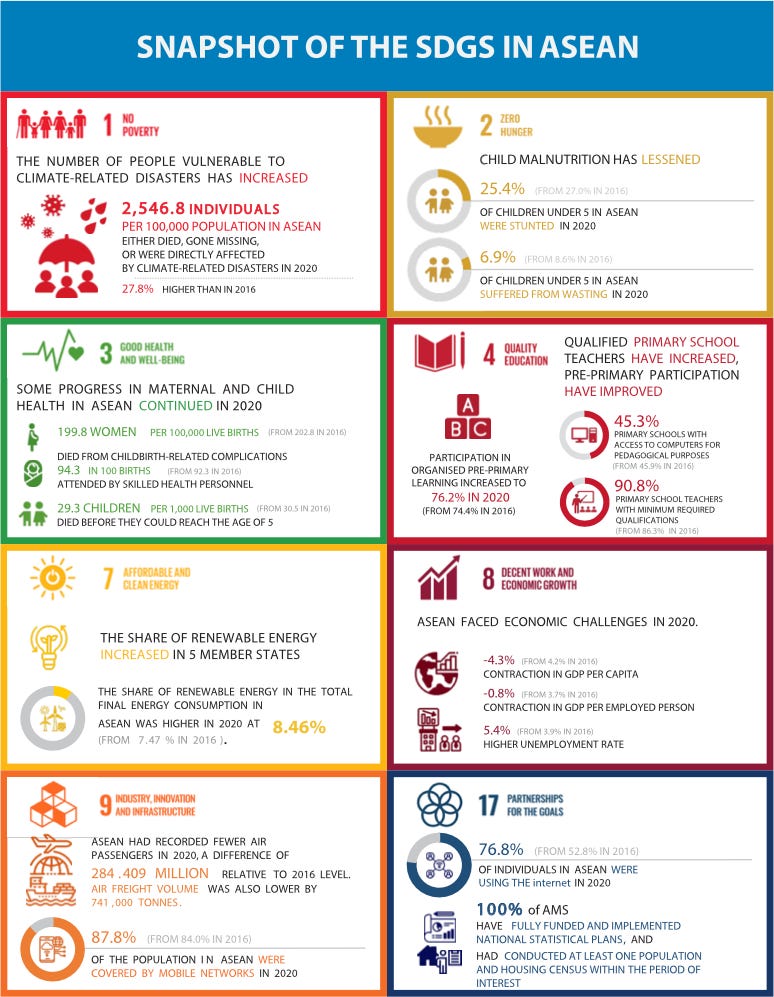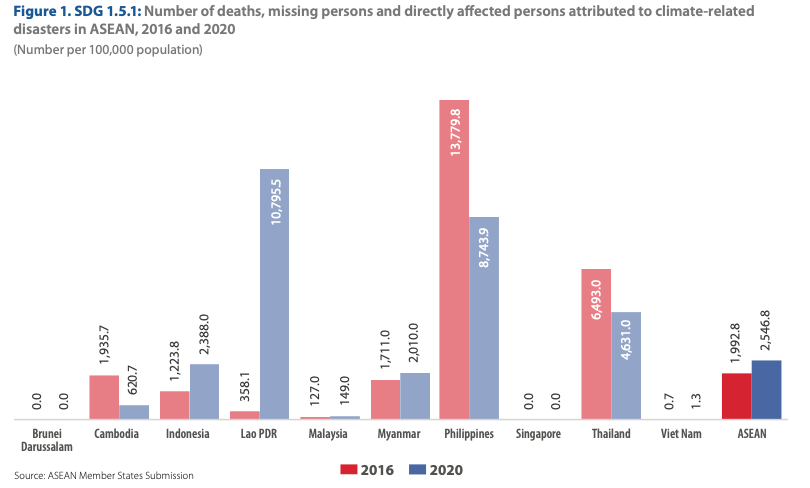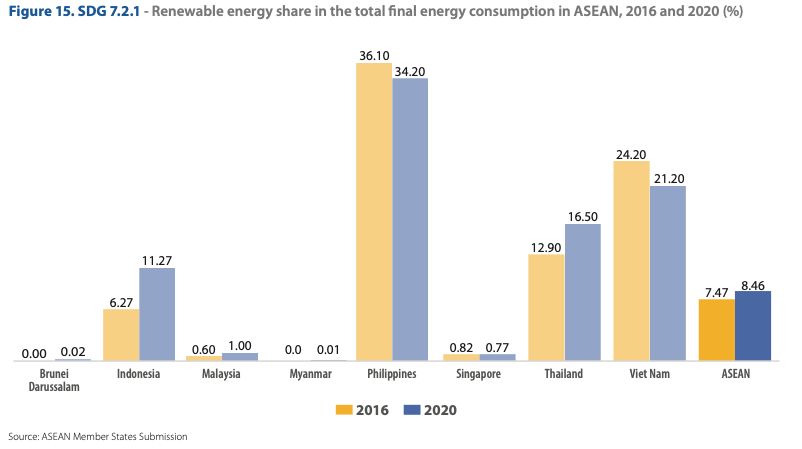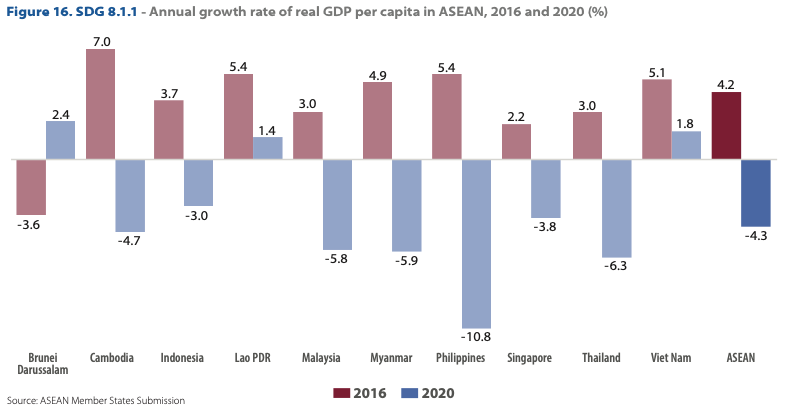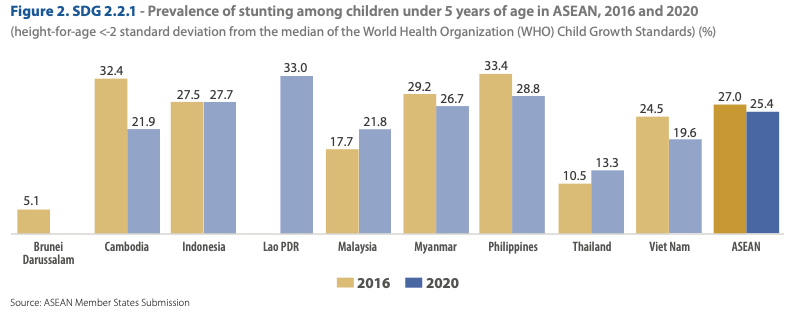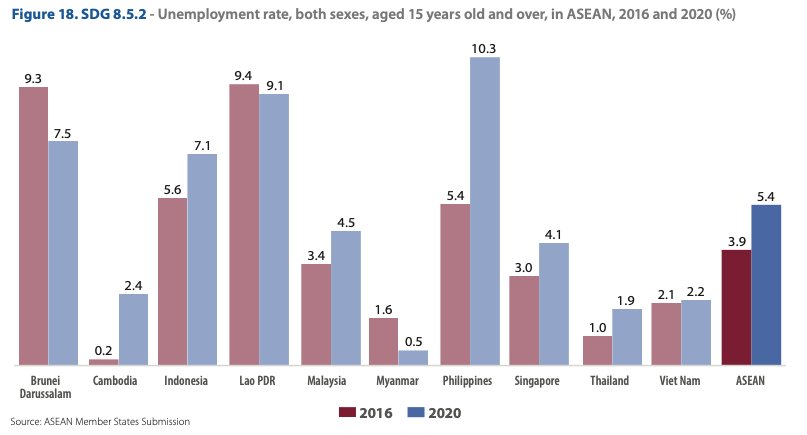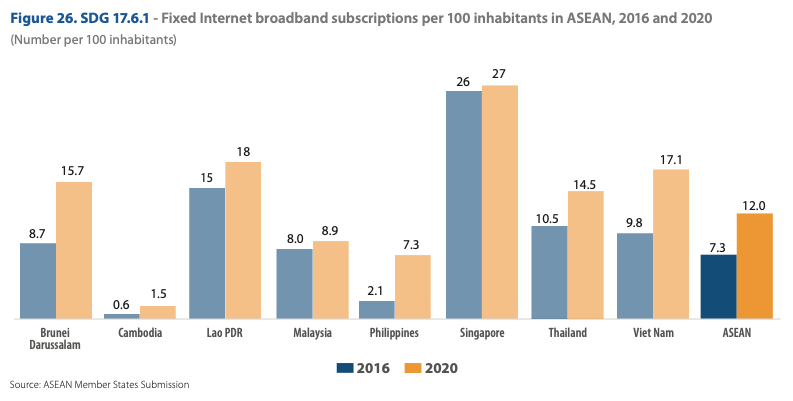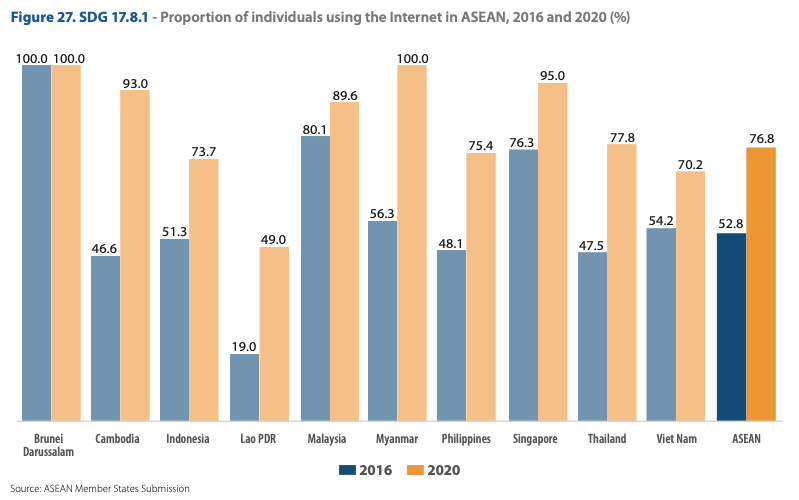ASEAN SCORECARD
The ASEAN Summit starts on the 8th of November. The Long Mekong Daily has a look at the scorecard.
UPDATE: In the lead-up to the ASEAN Leaders Summit in Phnom Penh from the 8th to 13th of November, the Long Mekong Daily takes look at the ASEAN Sustainable Development Goals (SDGs) scorecard ( 2016-2020 data). The 10 nations of ASEAN show little in aggregate improvements for economic indicators, education, climate disaster and poverty reduction. A combination of Covid-19 and economic spillovers from the US tech and trade war with China are significant contributors to downward pressure. Myanmar also impacted aggregate performance demonstrating that conflict is always detrimental to development.
Full Report available here
Climate Vulnerability Increased
The ASEAN region has become more vulnerable to climate-related disasters in 2020 relative to 2016 as shown by the increasing average level of population affected by such disasters. Vulnerability is an important dimension of poverty especially in areas that frequently experience these disasters as many people including the non-poor can easily fall into poverty. In 2020, an average of 2,546.8 individuals per 100,000 population either died, got missing, or were directly affected by climate-related disasters. This marked an increment of 554 per 100,000 population in comparison to 2016. Such an increase emanated from the experience of five AMS which reported increased proportions of population adversely affected by climate-related disasters. These were Lao PDR, Indonesia,
Myanmar, Malaysia, and Viet Nam, with Lao PDR and Thailand suffering the largest increases. Cambodia, Philippines and Thailand reported a reduced level between 2016 and 2020. That for Philippines, however, is not comparable with those of the rest of the AMS because its data include human-induced disasters. Brunei Darussalam and Singapore both reported zero numbers because they rarely experience such disasters. The ASEAN aggregate data exclude those of the Philippines and Viet Nam due to inconsistent definition.
Cambodia Slowly Learning
There is much to be done in Cambodia and Myanmar is dragging down the ASEAN average. The average participation rate in pre-primary organised learning was 76.2 percent in 2020, slightly higher than 2016’s 74.4 percent. The AMS that have experienced improvement from 2016 to 2020 are Thailand, Lao PDR, and Cambodia. Singapore maintained its high participation rate of around 96 percent. Those that have registered lower rates in 2020 relative to 2016 are Brunei Darussalam, Myanmar, and Indonesia.
Those for the Philippines and Malaysia remained at 66 and 88 percent, respectively. Viet Nam did not have data on this SDGI and was therefore not included in the regional estimate.
Renewables Need More Investment
Cambodia has about 61% renewable capacity, but actual generation from renewables is a respectable 41%. Solar power production lags, but efforts are being made to increase investment.
Efforts for developing renewable energy sources need intensification as the region sees minimal improvement in this aspect. The share of renewable energy in the total final energy consumption in the region was nearly unchanged from 7.47 to 8.46 percent (based on simple average) between 2016 and 2020. The Philippines and Viet Nam, which had the highest shares in renewable energy sources, experienced decreased shares in 2020. Meanwhile, improvements in the share of renewable energy were recorded for Indonesia and
Thailand. Data for Myanmar and Philippines were not included in the ASEAN aggregate data because of inconsistent definition. Data for Cambodia and Lao PDR were not available.
Per-capita GDP Contracts
In 2020, the real GDP per capita of ASEAN member states contracted by 4.3 percent, on average. All ASEAN economies except Brunei Darussalam recorded either a contraction or slower growth in their real GDP per capita. The level of contraction ranged from -3 to -10.8 percent. Lao PDR and Viet Nam experienced slower growth rates in 2020 when compared to this report’s base year of 2016.
NB: Cambodia was the second country globally to reach its pre-pandemic economic activity behind the United Arab Emirates (UAE).
Stunted Growth
On the average, a quarter (25.4%) of children under 5 years of age are stunted in 2020. This is slightly lower when compared to 2016’s 27.0 percent. Individual ASEAN member states’ recent performances on stunting show a mixed result. Among the member states with available information for the periods of interest, nearly half of them experienced a worsening malnutrition problem (i.e. Malaysia, Thailand and Indonesia), while the rest (Cambodia, Philippines, Viet Nam, Myanmar) showed some
improvements in 2020 compared to 2016. Because of this, the regional average did not change much. Greater effort is therefore needed to significantly improve the nutritional status of children in the region.
Jobs, Jobs and Jobs
In 2020, the ASEAN region experienced an unemployment rate at of 5.4 percent, higher by 1.5 percentage points from 2016’s 3.9 percent. Among the AMS with available data for 2020, the Philippines, Brunei Darussalam, and Indonesia saw the highest unemployment rates of 10.3, 7.5, and 7.1 percent,respectively. Relative to 2016, unemployment rates of Thailand and the Philippines nearly doubled while that in Cambodia increased 12 times. Indonesia’s rate also increased by 1.5 percentage points while those in Malaysia and Singapore both increased by 1.1 percentage points.
Internet Penetration
Three out of four individuals (76.8 percent) in the ASEAN region were reported to be using the Internet in 2020. This shows a remarkable improvement from only 52.8 percent in 2016. The COVID-19 pandemic, which has plagued economies worldwide, might have served as a nudge for both consumers and businesses to go digital in many countries. In Myanmar, Brunei Darussalam, Singapore and Cambodia, almost all of their residents were already using the Internet. Although the proportions of internet users in the other AMS were lower than 90 percent, significant progress have been observed.




